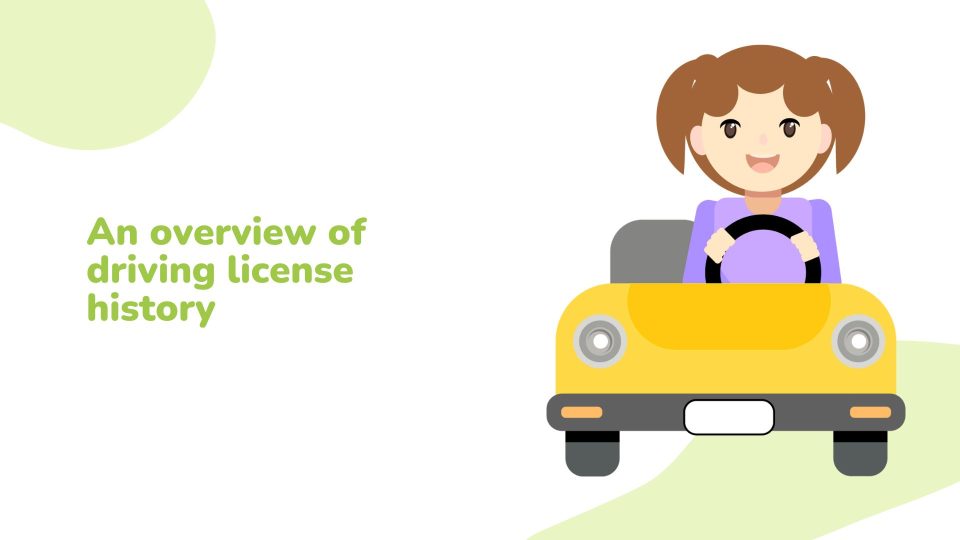To obtain a driving licence in India, you must be at least 18 years old and have a valid learner’s permit for at least 30 days. The process of obtaining a driver’s license in India involves the following steps:
Apply for a learner’s permit:
You can apply for a learner’s permit at your local Regional Transport Office (RTO). You will need to fill out an application form, provide identification and address proof, and pay the require fee. You will also need to pass a written test on traffic rules and regulations.
Practice driving: Once you have your learner’s permit, you can start practicing driving with a license driver.
Take the driving test: After at least 30 days of practice driving, you can take the driving test. The driving test will typically involve driving on a track or road while being evaluate by an examiner. You will need to demonstrate your knowledge of traffic rules and regulations and your ability to operate a vehicle safely.
Obtain your driver’s license: If you pass the driving test, you will be issue a driver’s license.
It’s important to note that the process of obtaining a driver’s license may vary slightly depending on the state or region in India. Additionally, you will need to renew your driver’s license periodically, typically every 5 years.
The history of driving licenses in India can be trace back to the early 1900s, during the British Raj. The first driving license was issue in 1904 in the city of Chennai (then known as Madras). At that time, driving licenses were issue only to professional drivers, such as chauffeurs and bus drivers.
In 1939, the Motor Vehicles Act was passe, which made it mandatory for all drivers to hold a driving license.
The Act also establishe the Regional Transport Office (RTO) as the authority responsible for issuing driving licenses.
Over the years, the format and design of the driving license have undergone several changes. In the early days, driving licenses were simple cards with basic information about the driver. Today, driving licenses in India are smart cards with a microchip that stores the driver’s personal information and driving history.
In recent years, the Indian government has introduced
several measures to improve road safety and reduce the number of accidents on the country’s roads. These measures include stricter testing and licensing procedures, as well as the use of technology to track drivers’ behavior on the road.
A driving license is an important document that certifies that an individual is authorize to operate a motor vehicle legally. Here are some of the reasons why having a driving license is important:
Legal Requirement: In most countries, driving without a valid driving license is illegal. If caught, one could face fines, penalties or even imprisonment. Therefore, a driving license is essential to avoid legal complications.
Personal Convenience:
Having a driving license allows individuals to operate a motor vehicle at their convenience, providing them with greater mobility and independence. This is particularly important in areas where public transportation is limite or not readily available.
Employment Opportunities: Many jobs require employees to have a valid driving license, particularly those that involve transportation or driving, such as truck drivers, delivery personnel, and chauffeurs. Without a driving license, individuals may be unable to pursue certain employment opportunities.
Insurance Coverage:
Road Safety: Obtaining a driving license requires individuals to pass a driving test, which ensures that they have the necessary skills and knowledge to operate a motor vehicle safely. This helps to reduce the risk of accidents on the road, thereby promoting road safety.
In conclusion, having a driving license is essential for legal compliance, personal convenience, employment opportunities, insurance coverage, and road safety.
Most insurance companies require drivers to have a valid driving license to qualify for coverage. Driving without a valid license can result in the denial of an insurance claim, leaving the driver liable for any damages or injuries cause.
Driving license is important in India for several reasons, including:
Legal requirement: Driving without a valid license is illegal in India. If caught driving without a license, you may be fine or even face imprisonment. Therefore, having a driving license is a legal requirement for driving any type of vehicle on Indian roads.
Identification proof: A driving license serves as a valid identification proof.
It contains the driver’s name, photograph, address, and other important details. Many organizations, including banks, government agencies, and private companies, require a valid identification proof to verify the identity of an individual. A driving license is accepte as a valid identification proof in most cases.
Road safety:
In order to obtain a driving license, a person must pass a written test as well as a driving test. These tests ensure that the person has the knowledge and skills require to operate a vehicle safely on Indian roads. Thus, having a valid driving license is an indication that the driver is traine and qualifie to drive, which helps to improve road safety.
Insurance coverage:
In case of an accident, having a valid driving license is important to avail of insurance coverage. Insurance companies may refuse to pay compensation if the driver was not license at the time of the accident.
In summary, having a driving license is important in India as it is a legal requirement, serves as valid identification proof, ensures road safety, and enables the driver to avail of insurance coverage in case of an accident.

